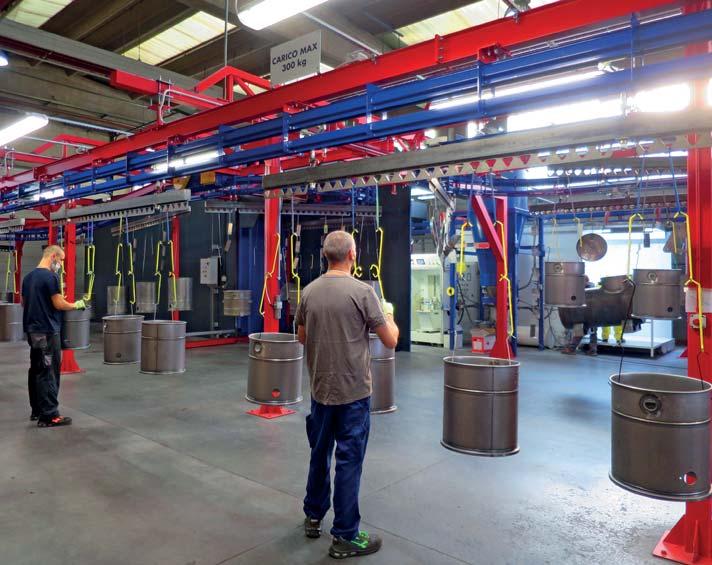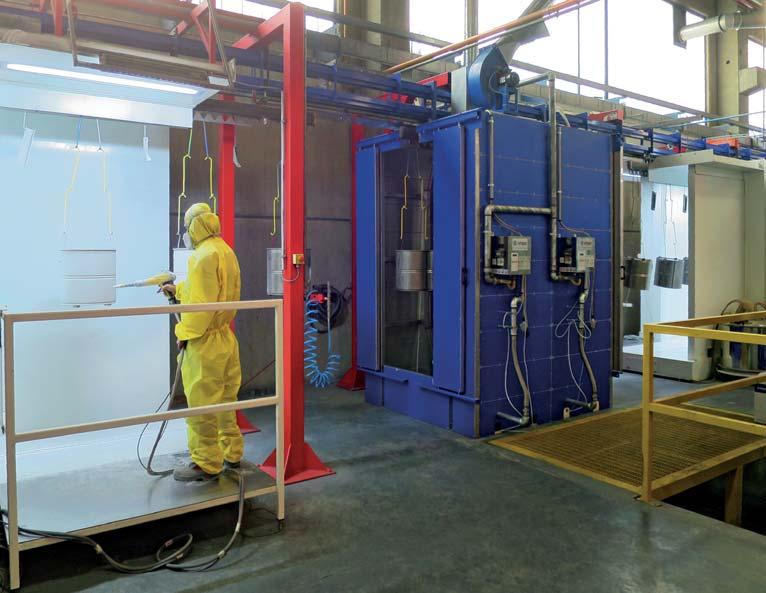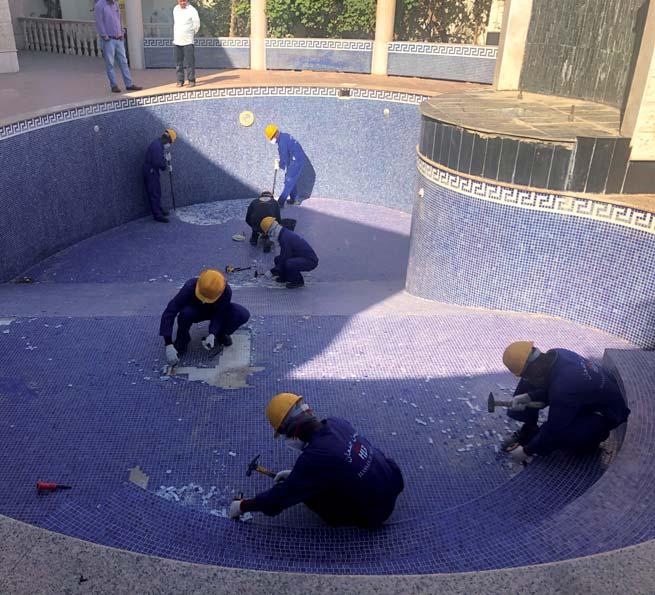
5 minute read
FOCUS ON TECHNOLOGY
Cycle Times Halved in One of the Few Anti-Corrosion Powder Coating Lines of Northern Italy
Monica Fumagalli ipcm®
When a manufacturer of coating systems also works as a coating contractor, it can fully understand its users’ issues, thus being able to better solve them and take them into consideration in the design and construction of its own plants. This is how Eurotherm faced and solved the production problems of Colortec, its own contracting coating fi rm, currently specialising in anti-corrosion powder products.
In the surface treatment sector, it is rare to fi nd a manufacturer of painting systems with a division devoted to contracting coating activities, as is the case with Eurotherm, a company that has specialised in the construction of complete industrial coating lines for over fi fty years. In 2009, it acquired contracting business Colortec (Volpiano, Turin, Italy)1, thus transforming it into an international benchmark
1 M. Fumagalli, “The key role of sheet metal preparation in the manufacture of coating systems and outdoor structures” in ipcm® International Paint&Coating Magazine no. 49 (January/February 2018), pages 82-91. powder coater that treats not only its own plants’ components, but also medium and large-sized parts for companies from the most diverse sectors, including machine tools, furniture, outdoor architecture, car wash systems, and elevators. “Such corporate structure,” explains Eurotherm CEO Paolo Ghiazza, “gives us the ability to identify the production diffi culties of any paintshop, solve them, and then take them into account in the design and construction of our systems.” Colortec’s fi rst plant was implemented and improved with the technical measures described in an article published on the ipcm® issue of January 2018. The second plant owned by the company, however, had some critical problems in terms of cycle times and quality results. “When we decided to intervene to improve the operation of Colortec’ second line,” says Ghiazza, “together with our technical staff , we thought that this could be the right opportunity to diversify the two plants, thus exclusively devoting the second one to anti-corrosion treatments for galvanised sheets.”

Loading area and pre-treatment plant.
The coating line’s critical issues
“Most of the workpieces treated by Colortec,” notes Ghiazza, “require a two-coat system, including a primer and a top coat. Therefore, after the initial surface cleaning and preparation phase, our cycle continued with the primer application and the curing phase at 140 °C. Afterwards, the two-rail conveyor’s bar returned to the starting point and the parts were subjected to a second fi nishing process, excluding the cleaning operation. Considering that the load bar could support 33 racks and that a cycle lasted for 5 minutes, our operators were only active for three hours out of six. This was an issue not only in terms of production, but also of staff management. Moreover, the system has been designed to accommodate only one booth: therefore, it was diffi cult to improve also for space reasons. Last but not least, its 3-stage pre-treatment cycle, which included cleaning, phosphodegreasing, and rinsing, did not meet our paint adhesion requirements.”
A solution integrating a new pre-treatment and coating cycle
The revamping of the plant entailed the integration of an osmosis system for the production of high quality water for rinsing, a no-rinse passivation tank in the pre-treatment line, a PVC sandwich booth for the base coat application, and an RHT gelling oven (at about 900 °C), supplied by Infragas Srl (Turin, Italy) and located before the top coat application booth. “In order to improve our pre-treatment process, we followed the advice of Chemtec (Corbetta, Milan, Italy), a company specialising in the production of chemical products for industrial surface treatments and already one of our trusted partners for solving the problems encountered with the fi rst Colortec’s system,” says Ghiazza. “Thanks to the technical measures suggested by Chemtec, we achieved the good cleaning results we expected without revolutionising the original confi guration of the system. This can be a considerable advantage for any contractor with little space available and facing cleaning problems similar to ours.” The critical issues related to process times were solved with the use of AkzoNobel’s dry-on-fused coating system, which allows applying the powder fi nishing layer on the still hot primed substrate, thus eliminating the intermediate cross-linking step.
© Eurotherm

Loading operation: the racks number has been increased from 33 to 39.

© Eurotherm
Sandblasting plant with stainless steel grits.
© Eurotherm

From right to left: booth for application of primer, IR oven for gelation and application of top coat.
© Eurotherm

Application of the powder top coat.
The new coating process
In addition to the line integrations described above, Colortec also installed an automatic belt sandblasting system provided by Cogeim, thus implementing a complete, traditional anti-corrosion coating cycle including as follows: • Sandblasting with stainless steel grits • 5-stage pre-treatment: cleaning, phosphodegreasing, rinsing, osmotic rinsing, and no-rinse passivation + drying • Application of the zinc-rich powder primer • Gelation in the IR oven • Application of the powder top coat.
The advantages of the new coating cycle
“We can now perform a full cycle in just three hours, thus halving our process times and freeing up a work shift to coat other products,” indicates Ghiazza. “Such a system has considerable advantages also in terms of savings, because the coater has to bear only the costs of powders and of the gas used in the gelling oven. Finally, whereas the fi rst Colortec plant can treat large parts (with a maximum dimension of 7.5 x 4 x 3 m) in small batches, this second, enhanced system will be devoted exclusively to the application of anti-corrosion powder coatings on medium-sized components (3 x 1.80 x 1 m) even in large batches. We have already increased the number of our racks, adding 6 to the existing ones. This gives us a signifi cant competitive advantage in our area, as only a few coating contractors in Northern Italy off er anti-corrosion powder treatments.”
Conclusions
Colortec’s objective is becoming a benchmark company in the anti-corrosion coating fi eld, not only in Piedmont, but also in the neighbouring regions. “In Southern Italy, due to the harsher climatic conditions related to the proximity to the sea, most structures exposed outdoors are treated with anti-corrosion systems including several layers; our customers’ awareness in the North, on the other hand, is still limited. Recently, we have even had to refuse orders from public bodies requesting inadequate systems for structural elements such as road barriers. Colortec does not just want to fi ll a void in the anti-corrosion powder coating market, but also off er quality systems obtained with optimised processes: this is the winning formula for any coating contractor.” ‹










